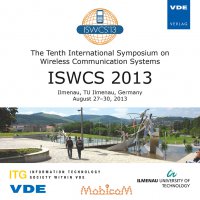Defining Turbo Codes as Irregular LDPC Codes
Conference: ISWCS 2013 - The Tenth International Symposium on Wireless Communication Systems
08/27/2013 - 08/30/2013 at Ilmenau, Deutschland
Proceedings: ISWCS 2013
Pages: 2Language: englishTyp: PDF
Personal VDE Members are entitled to a 10% discount on this title
Authors:
Bas, J. (Centre Tecnològic de Telecomunicacions (CTTC), Av. Carl Friedrich Gauss s/n, Parc de la Mediterrània, Castelldefels, Barcelona, Spain)
Abstract:
Turbo Codes (TC) and Low-Density Parity- Check (LDPC) codes share similar structures in their respective error correction process (e.g. two-stage iterative decoding, Log-Likelihood based, etc.). These relationships can be used to express TCs in terms of the parity-check matrix of LDPCs but constrained to be: i) of low-density and, ii) without cycles of 4th order [1][2]. Otherwise the performance of Believe Propagation (BP) algorithm, the decoding strategy of LDPC codes, degrades notably [3],[4]. The introduction of constraints in TC’s parity-check matrix determines the active shift registers of its convolutional mother codes and its permutation matrix. Simulation results show that the Bit Error Rate (BER) of Turbo Codes decoded by means of Believe Propagation (BP) algorithm is quite similar to that offers the Bahl- Cocke-Jelinek-Raviv (BCJR), the classical algorithm for decoding Turbo Codes.


